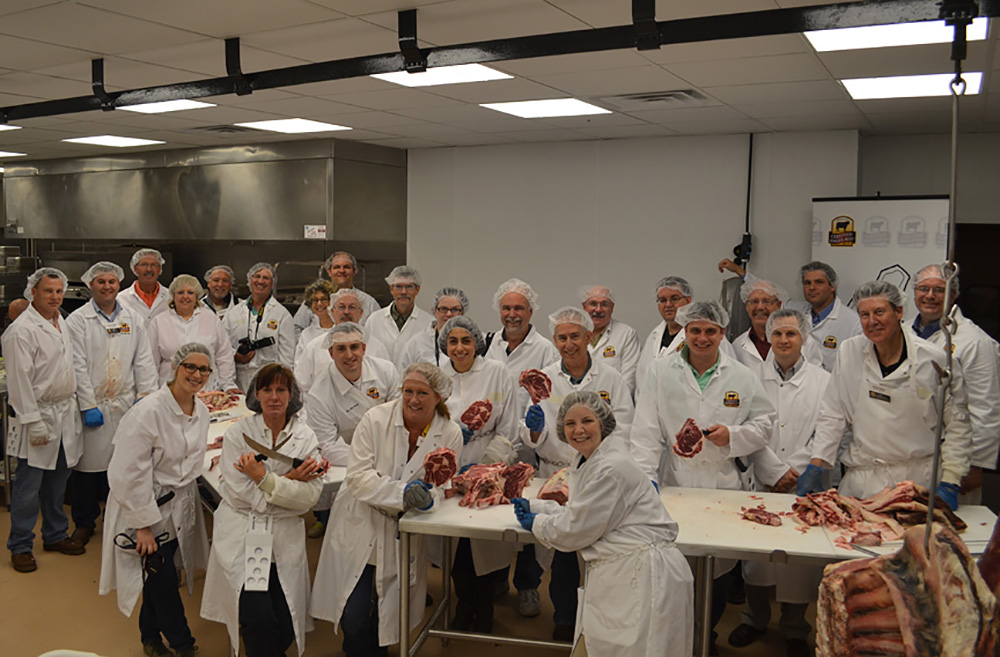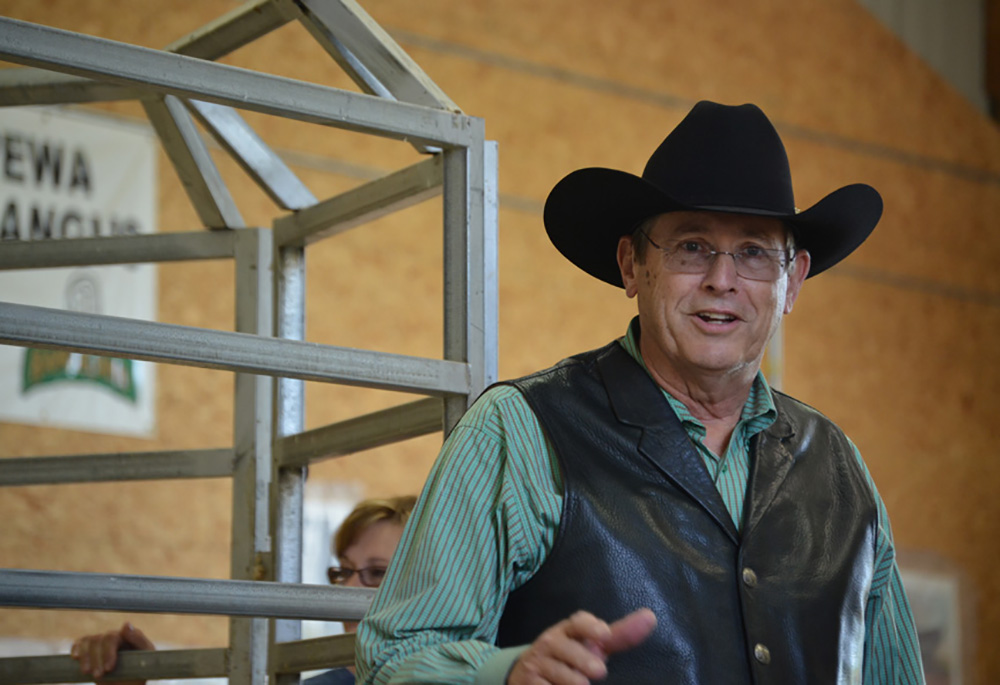
Dinner plate to farm gate education
CAB training center opens to join ranch, retail, culinary cultures
by Miranda Reiman
The Certified Angus Beef®(CAB®) brand celebrated a new ability to link ranchers to consumers in May, sharing the party with reporters, editors, broadcasters, chefs and “foodies” from across the United States.
Not surprisingly, the CAB Education & Culinary Center’s Grand Opening was an educational event. It started with a culinary “dine-around” in Cleveland the night before shuttling from that city’s Ritz Carlton Hotel to Wooster, Ohio, on Saturday, May 5, to experience every aspect of the training hub that adds value to beef.
Yes, there was an aura of hospitality and catering to appetites, but that’s right in line with the best culinary and foodservice traditions. Appetizers at Hodge’s, a new eatery rooted in the “Hodge Podge” food truck, gave way to main courses at The Greenhouse Tavern, known for being “certified green” as well as its CAB entrees. Throughout the evening that featured wine pairings—capped by desserts at Lola’s—chefs and media enjoyed and chatted about their food and fascinations.
Guest chefs were celebrities Howie Kleinberg of Bulldog BBQ in Miami, Fla.; Rory Schepisi of Boo tHill Saloon & Grill in Vega, Texas; and Michelle Brown of Jag’s Steak & Seafood in West Chester, Ohio.That team would join in preparing the Saturday banquet at the Center.
Welcoming the group to a Meats 101 class that morning, CAB President John Stika called the facility “a milestone but not an endpoint,” representing the unique nature of the brand that spans the beef industry. A wide range of complementary skills among the staff help partners succeed at every level.

Starting at the ranch, the best beef genetics in the world may fall short if the next owner doesn’t realize what he has and maintains full potential for excellence. That same risk lurks at every link in the beef supply chain, all the way to the consumer.
But with enough knowledge, common purpose and insight, more cattle will qualify for CAB and add value for everyone from ranchers to the 15,000 partners worldwide.
CAB meat scientist Phil Bass led the class in exploring individual muscles within the wholesale cuts, noting such hands-on work helps licensees please consumers profitably. Just slicing another inch of the primal to put a “sirloin steak” on the tray for the retail case may involve four muscles that have been severed at several angles. The result is too big and variable in quality.
“When you follow the seams and pull out some individual cuts like the tri-tip and sirloin filet, you can market higher quality, smaller cuts,” he said. It all adds to consumer satisfaction.
And since the consumer is the source of every dollar in the beef supply chain, a whole-system approach is the best way to get more of those dollars back to the producers who create cattle with the potential top lease.
The CAB staff that has worked for decades to share expertise among brand partners can now “take that to a new level,” at a time when connections are increasingly important, Stika said. “This Center is a bridge that connects the cultures within the beef communities from the ranching side to the retail, foodservice and consumer sides,” he added in remarks before a lunch of cold-smoked and hot-grilled tri-tip from CAB Chef Michael Ollier.

Just a couple of days prior, the Center had been the venue for an “International Roundup” of licensees from 15 countries as they located, cut, cooked and tasted specialty beef cuts, Stika noted. Whether from across town or the other side of the world, brand partners will continue to use the meat lab and culinary school to learn more about retail case merchandising and creative menu planning.
To complete the reverse tour and move from dinner plate to farm gate, the group traveled by bus to Rod and Laurie Ferguson’s Chippewa Valley Angus Farms at Rittman, Ohio. That side was quite familiar to the farm media, but there were new lessons in how CAB demonstrates its producer link and how the Fergusons put a caring face on the concept of the 33,000 rancher-owners behind the brand.
Back for the five-course banquet in the evening, guests were amazed at the flavors and creativity that showcased the cuts they had fabricated out of primals during the morning session. CAB Chef Scott Popovic joined forces with the celebrity guests and welcomed another, pastry chef Kara Swortchek from Red, the Steakhouse, to bring the best out of the best.
CAB producer board members joined in the evening, and co-founding figures Mick Colvin and Dr. Bob VanStavern were recognized as the namesakes for the Center’s two conference rooms.Everyone could hear the sizzle, enjoy the mouth feel, see, smell and taste how the high-quality beef’s value was maximized, captured, capitalized and realized, made to work for all others in the chain.
You may also like
$100,000 Up for Grabs with 2024 Colvin Scholarships
Certified Angus Beef is offering $100,000 in scholarships for agricultural college students through the 2024 Colvin Scholarship Fund. Aspiring students passionate about agriculture and innovation, who live in the U.S. or Canada, are encouraged to apply before the April 30 deadline. With the Colvin Scholarship Fund honoring Louis M. “Mick” Colvin’s legacy, Certified Angus Beef continues its commitment to cultivating future leaders in the beef industry.
Raised with Respect™ Cattle Care Campaign Launched This Fall
Raised with Respect™ was developed as part of a strategic cattle care partnership between Sysco and CAB. The collaboration focuses on supporting farmers and ranchers, equipping them with continuing education to stay current on best management practices and helping to increase consumer confidence in beef production.
Quality Wins, Again
Sara Scott, Vice President of Foodservice for Certified Angus Beef, emphasizes the importance of taste over price in the beef market during the Feeding Quality Forum. As consumer demand for high-quality beef grows, Scott highlights the need for increased supply and encourages communication with packer partners to meet the demand for Prime beef.



